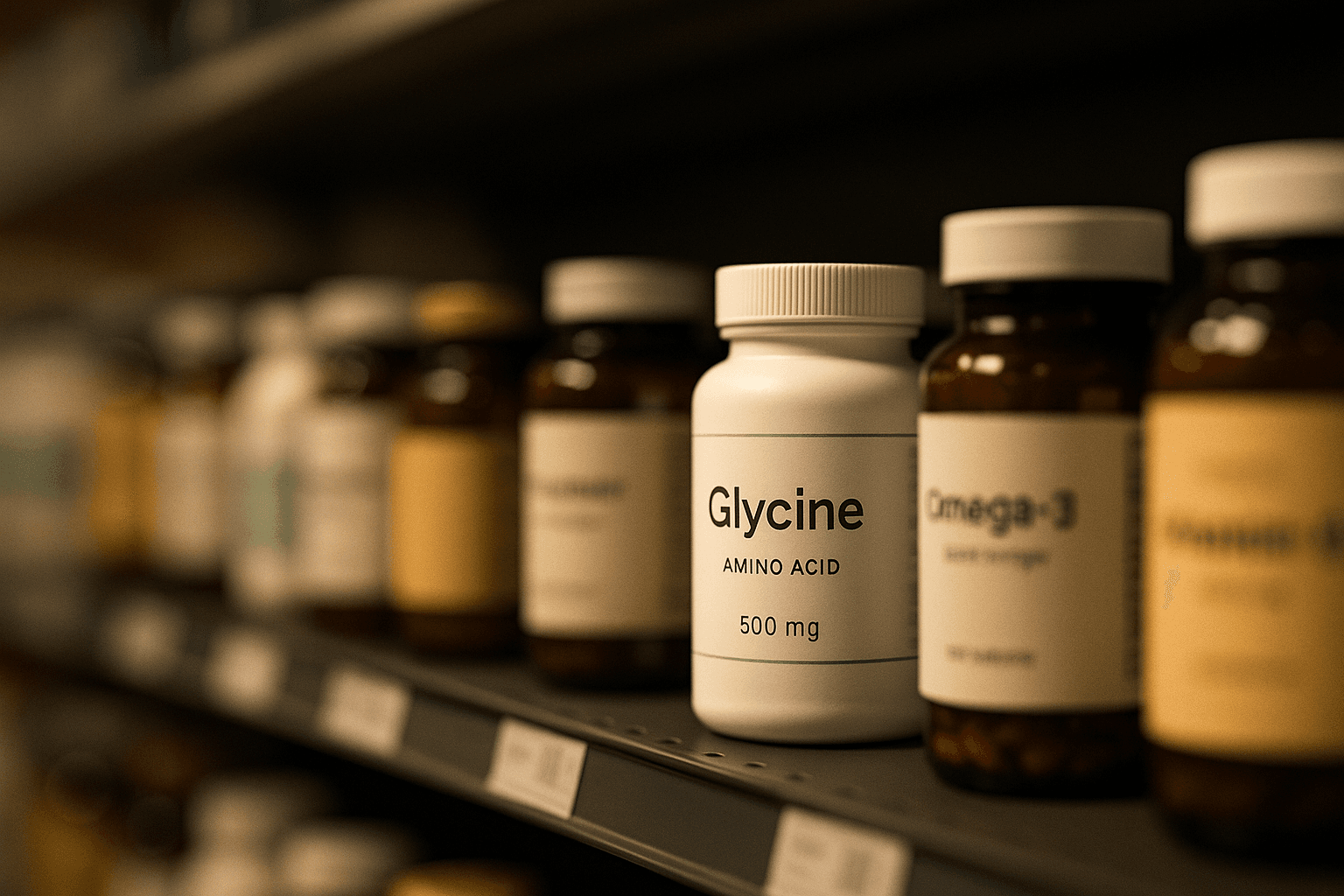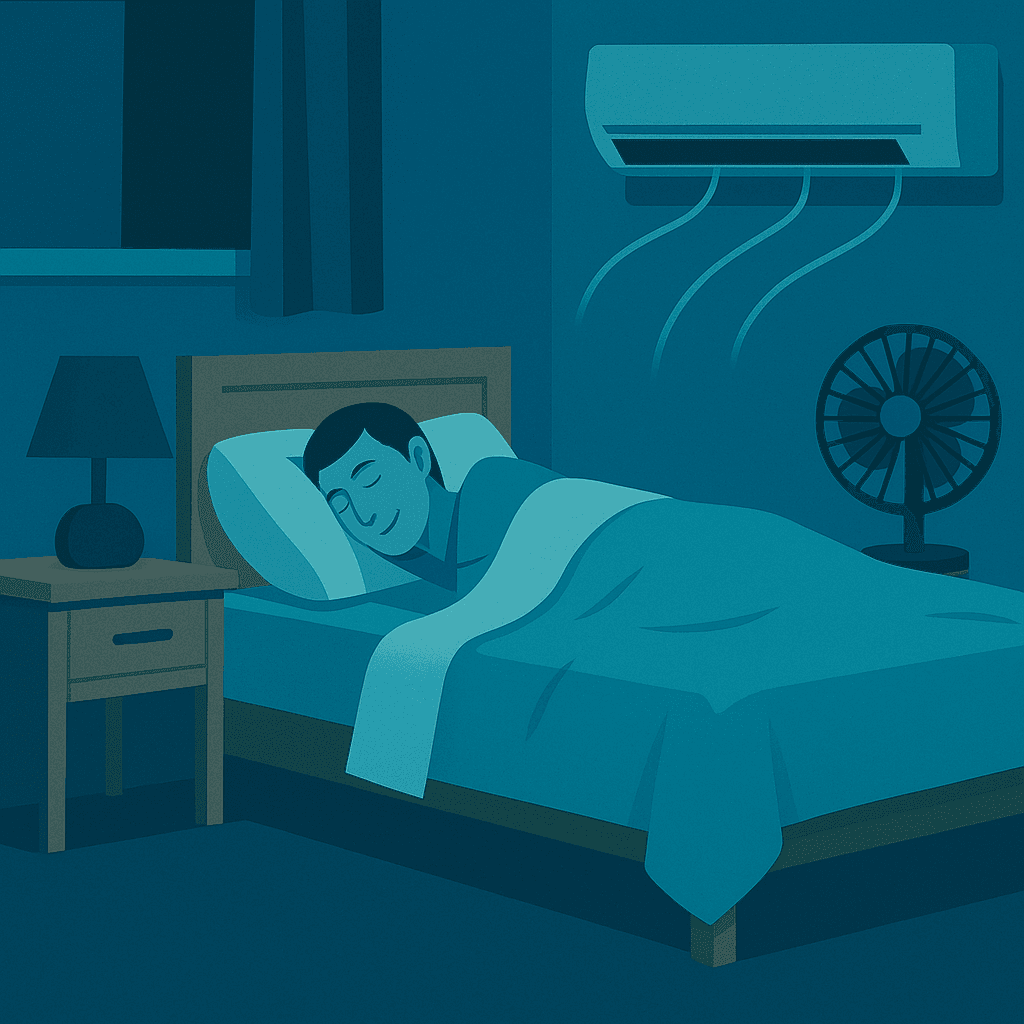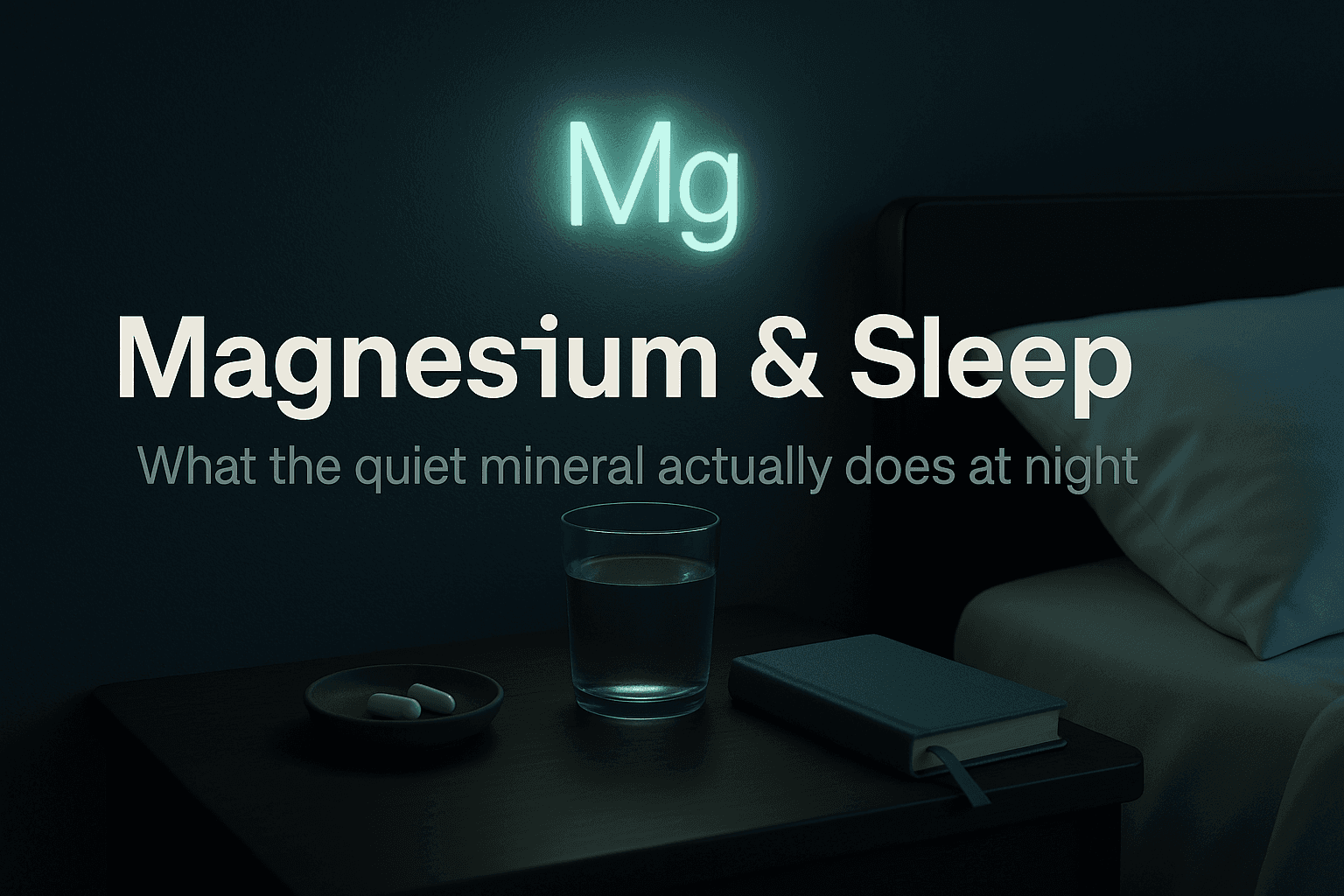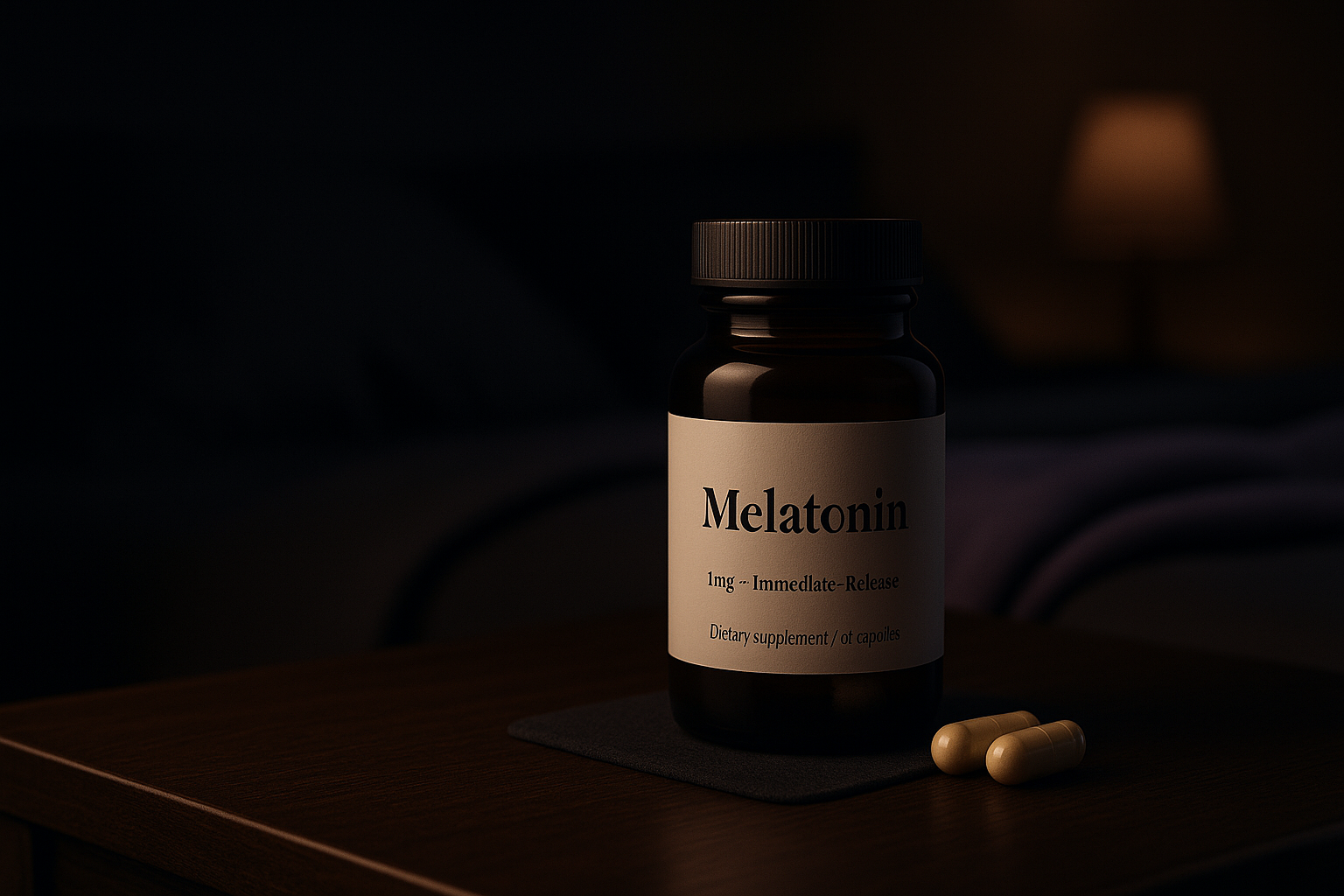Melatonin and Sleep: What Science Really Says (2025)
TL;DR: Melatonin is not a “natural sleeping pill.” It’s a hormone that tells the body when night has arrived. Supplements can shorten sleep onset latency modestly, but their biggest value is in circadian rhythm disorders — like delayed sleep phase, jet lag, or non-24-hour sleep in blind adults. Timing matters more than dose.
Why Is Melatonin So Popular?
In 2023, Americans bought more melatonin gummies than vitamin C. Once a niche hormone studied in labs, melatonin is now a fixture of pharmacy aisles, bedtime routines, and even children’s nightstands.
Its appeal is obvious: melatonin is cheap, accessible, and marketed as a “natural” alternative to prescription sleeping pills. But here’s the crucial distinction: melatonin does not sedate. It doesn’t flip the switch to unconsciousness. Instead, it acts like dimming the lights before a performance — a signal to the body that the evening has begun.
When timed correctly, it can help the body clock realign and nudge sleepiness earlier. Taken at the wrong time, it may do little or even shift the clock in the opposite direction.
A Short History: From Darkness to Gummies
First isolated in 1958 from the pineal glands of cows, melatonin was named after its curious ability to lighten frog skin. By the 1970s, scientists recognized it as the body’s hormone of darkness, secreted nightly by the pineal gland under the direction of the brain’s master clock.
By the 1990s, melatonin supplements had moved from research labs to pharmacy shelves in North America. Europe took a more cautious approach, regulating melatonin as a hormone and making it prescription-only. That split remains today: in the U.S., melatonin is sold as a dietary supplement with minimal oversight; in the EU and UK, it’s usually only available as Circadin, a 2 mg prolonged-release tablet prescribed for older adults.
What Does Melatonin Do in the Body?
Melatonin’s release is controlled by the suprachiasmatic nucleus (SCN), the brain’s circadian pacemaker. Each evening under dim light, levels rise in the blood, signaling the start of biological night — a moment researchers call dim-light melatonin onset (DLMO).
- Circadian signal: Melatonin is the body’s metronome, keeping time but not playing the melody of sleep.
- Phase shifting: Depending on when it’s taken, supplements can advance or delay circadian rhythms.
- Mild soporific effect: Melatonin can shorten sleep onset latency by a few minutes — more like drawing curtains than knocking you out.
Best Time to Take Melatonin
Timing matters more than dose.
- For general sleep onset, most people take melatonin 30–60 minutes before bed.
- For circadian shifting (jet lag, delayed sleep phase), it works best 3–5 hours before your natural bedtime.
- Taken too late, melatonin may push the rhythm back instead of forward.
For practical steps on how to use it—including conservative dose ranges and jet‑lag playbooks—see our Timing & Doses guide.
Does Melatonin Actually Help You Sleep?
General insomnia
The evidence is modest. Meta-analyses show melatonin can help people fall asleep about 7–12 minutes faster, with a small bump in total sleep time. Not dramatic, but measurable.
Circadian rhythm disorders
Here melatonin shines.
- Delayed Sleep–Wake Phase Disorder (DSWPD): Low evening doses (0.3–3 mg) taken hours before bedtime can advance sleep by 30–60 minutes.
- Jet lag: Especially effective for eastward travel when paired with bright morning light.
- Non-24-hour sleep–wake disorder (in blind adults): Helps entrain rhythms.
- Shift work disorder: Evidence mixed; light remains more powerful than pills.
Older adults
Melatonin secretion declines with age, which may explain fragmented sleep. Clinical trials of Circadin 2 mg prolonged-release show improvements in sleep quality in people over 55.
Melatonin for Jet Lag
Jet lag is melatonin’s most reliable use case. Crossing time zones forces the body’s internal clock to adjust, and eastward travel (where the day shortens) is especially brutal.
Melatonin helps by shifting the biological night closer to the new local bedtime. But it’s not a one-night fix: studies show it works best when taken for several days around travel and combined with bright morning light at the destination and dark evenings to reinforce the signal.
Melatonin in Children
Perhaps the most polarizing use of melatonin is in children. In the U.S., kid-friendly gummies have become a booming industry; in Europe, melatonin is prescription-only and tightly regulated.
Research shows melatonin can help children with neurodevelopmental disorders fall asleep faster. But for otherwise healthy kids, the evidence is thinner. Long-term safety data are scarce, and product inconsistencies are worrying. Analyses have found bottles labeled “1 mg” actually containing five times that — or traces of serotonin.
The consensus: melatonin may have a role in pediatric care, but it should not replace healthy routines. Regular schedules, evening dimness, and morning light remain the first-line tools.
Why So Many Forms?
From sprays to gummies to extended-release tablets, melatonin’s packaging varies widely — but the hormone inside is the same. What differs is how it’s delivered.
- Immediate-release (IR): Works quickly, useful for falling asleep faster or for phase-shifting.
- Prolonged-release (PR/MR): Mimics the body’s natural curve, often prescribed in older adults.
- OTC gummies/tablets: Convenient, but quality is inconsistent.
How Much Melatonin Should You Take?
Dosing depends on your goal.
- Phase shifting (DSWPD, jet lag): 0.3–3 mg, taken 3–5 h before biological night.
- General sleep onset: Start with 0.5–1 mg immediate-release, 30–60 min before bed. Increase only if needed.
- Older adults: 2 mg prolonged-release, 1–2 h before bed, as per EMA approval.
Think of melatonin as a whisper to the body clock. Too much or mistimed, and the message gets lost.
Is Melatonin Safe?
For most adults, short-term use is safe. Side effects include headache, dizziness, or next-day grogginess.
Long-term data are limited, particularly in children, where rising usage raises concerns. Interactions matter: melatonin is metabolized by CYP1A2, meaning drugs like fluvoxamine can raise levels, while smoking lowers them. Evening caffeine can also interfere.
Practical Takeaways
- Use melatonin for circadian problems (jet lag, delayed sleep phase), not as your first fix for general insomnia.
- Timing matters more than dose.
- Start low. Half a milligram often suffices.
- Buy smart. Look for USP or NSF seals.
- Pair with light. Morning brightness and evening dimness amplify its effects.
FAQ
Is melatonin addictive?
No. It does not cause dependence or withdrawal.
How long does it take to work?
For sleep onset: 30–60 minutes. For circadian shifting: several days of consistent use.
Is higher better?
Not usually. Many benefits occur at 0.5–3 mg. Higher doses add side effects without extra benefit.
Can melatonin replace good sleep hygiene?
No. It works best alongside consistent routines, evening dimness, and morning light.
RELATED TOPICS
POPULAR IN SUPPLEMENTS

Glycine and Sleep: What Science Really Says (2025)
Glycine is a small amino acid with an outsized role in sleep physiology. At ~3 g before bed, it seems to improve subjective sleep and morning alertness—especially when paired with magnesium.

Glycine for Sleep: A Practical Guide
Does glycine help sleep? What it is, benefits, how to try 3 g before bed, stacks, and cautions.

Melatonin Timing & Doses: How to Use It Safely
How to use melatonin—best timing windows, dose ranges, and jet-lag strategies.

Magnesium and Sleep: What Science Really Says (2025)
Does magnesium help you sleep better? Forms, timing, dosing, safety, and what the evidence actually shows.
RELATED TOPICS
POPULAR IN SUPPLEMENTS

Glycine and Sleep: What Science Really Says (2025)
Glycine is a small amino acid with an outsized role in sleep physiology. At ~3 g before bed, it seems to improve subjective sleep and morning alertness—especially when paired with magnesium.

Glycine for Sleep: A Practical Guide
Does glycine help sleep? What it is, benefits, how to try 3 g before bed, stacks, and cautions.

Melatonin Timing & Doses: How to Use It Safely
How to use melatonin—best timing windows, dose ranges, and jet-lag strategies.

Magnesium and Sleep: What Science Really Says (2025)
Does magnesium help you sleep better? Forms, timing, dosing, safety, and what the evidence actually shows.
